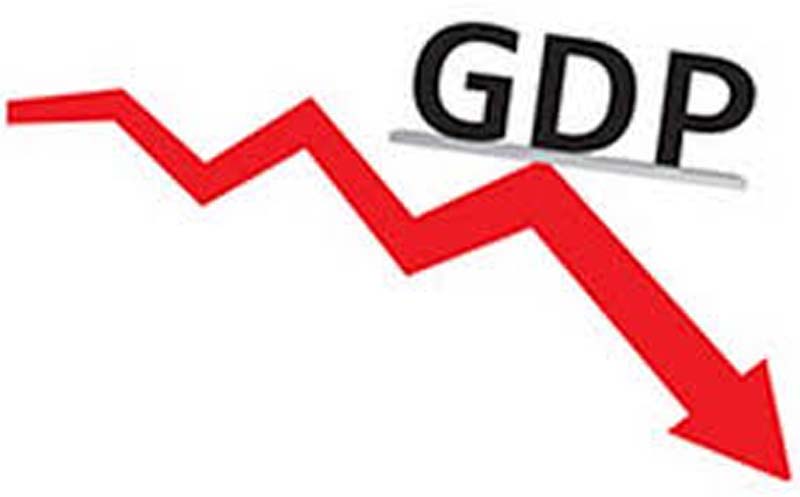NEW DELHI, May 31: The Indian economy grew at its slowest pace in a year during January-March, pulling down the GDP growth in the full fiscal 2021-22 to 8.7 per cent as Russia’s invasion of Ukraine added a new inflation hurdle to the recovery.
The gross domestic product (GDP) expanded by 4.1 per cent in the final quarter of 2021-22, according to data released by the statistics ministry.
This was lower than the 4.8 per cent growth the Chinese economy saw in the quarter.
For the full year (April 2021 to March 2022), India’s economic growth of 8.7 per cent was lower than the 8.9 per cent the ministry had projected three months back.
The economy had contracted by 6.6 per cent in the 2020-21 financial year.
First, the virus-related curbs and then the war in Ukraine added to higher commodity prices and supply squeeze.
Economists said the outlook for the current fiscal year remains clouded as global crude oil prices have hardened back to USD 120 per barrel after increased sanctions on Russian oil.
Momentum in the services sector will be one of the key drivers apart from the government’s focus on enhancing public capital expenditure.
High inflation had led to the Reserve Bank raising the benchmark interest rate by 40 basis points in an unscheduled review. It is expected to take similar measures when the Monetary Policy Committee meets for the bimonthly review on June 8.
Government’s Chief Economic Adviser V Anantha Nageswaran ruled out the risk of stagflation in India as the country is better placed than other nations.
Stagflationary risk to India is quite low compared to other countries, he said.
Stagflation is the phase when both inflation and unemployment rates are high with moderation in GDP growth.
During Q4, private consumption expenditure grew by 7.9 per cent, reflecting some impact of pent up demand. There was also a revival in contact-intensive services in the last quarter which has helped the GDP print reach respectable levels.
The GDP had grown by 2.5 per cent in the January-March quarter in the previous year.
Separately, the eight core infrastructure industries grew by 8.5 per year-on-year in April 2022, a six-month high. Except crude oil and steel, all other infrastructure industries recorded positive growth during the month.
Crude oil output has been weak for quite some time and has been in contraction now for 53 months. This means the country’s dependence on global crude oil will be even higher, which is on the boil leading to imported inflation and its associated consequences for the economy.
Rumki Majumdar, Economist, Deloitte India, said the difference between the real and nominal GDP suggests that inflation has been a persistent problem, and the economy has been fighting the challenge of rising prices for a long time now.
“Government’s intervention in the form of duty cuts on imports, subsidies on fertilisers and cooking gas, duty cuts on fuels to protect consumers and businesses from high inflation is likely to impact the fiscal deficit in the coming quarters.”
According to the data released by the National Statistical Office (NSO), India’s real GDP grew to Rs 147.36 lakh crore from Rs 135.58 lakh crore in 2020-21.
Gross value added (GVA) growth during the fiscal ending March 2022 was at 8.1 per cent as against a contraction of 4.8 per cent in the preceding year.
The GVA growth in the manufacturing sector accelerated to 9.9 per cent during the year as against a contraction of 0.6 per cent earlier.
GVA growth in both mining and construction was 11.5 per cent. These two large segments of the economy had contracted in the COVID-hit 2020-21.
However, agriculture sector growth decelerated to 3 per cent from 3.3 per cent in FY21.
Electricity, gas, water supply and other utility services segment grew by 7.5 per cent during 2021-22. The segment had contracted by 3.6 per cent in the previous fiscal.
GVA growth in services sector — trade, hotel, transport, communication and services related to broadcasting — was 11.1 per cent during 2021-22 as against a contraction of 20.2 per cent in the previous year.
Financial, real estate and professional services grew by 4.2 per cent in the year over 2.2 per cent earlier.
Public administration, defence and other services posted 12.6 per cent growth against (-)5.5 per cent in 2020-21.
“Real GDP at Constant (2011-12) Prices in the year 2021-22 is estimated to attain a level of Rs 147.36 lakh crore, as against the First Revised Estimate of Rs 135.58 lakh crore for the year 2020-21.
“The growth in GDP during 2021-22 is estimated at 8.7 percent as compared to a contraction of 6.6 percent in 2020-21,” the NSO said.
Also, nominal GDP or GDP at Current Prices in 2021-22 was estimated at Rs 236.65 lakh crore, as against Rs 198.01 lakh crore in 2020-21, showing a growth of 19.5 per cent.
As per the NSO data, per capita income (based on net national income) during 2021-22 was Rs 1.5 lakh per annum at current prices, up from 1,26,855 in 2020-21, showing a growth of 18.3 per cent.
However, at constant prices, per capita annual income works out to be Rs 91,481, up 7.5 per cent from Rs 85,110 in FY21.
Gross fixed capital formation was estimated at Rs 47.84 lakh crore in 2021-22, up from Rs 41.31 lakh crore in the preceding year. (PTI)


